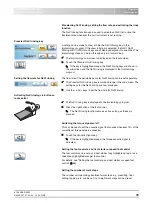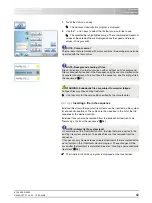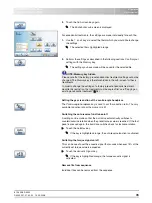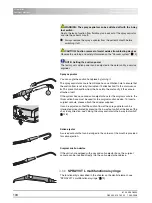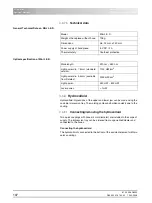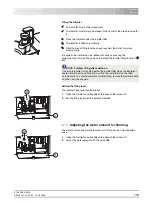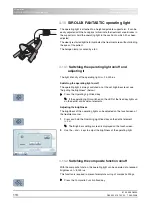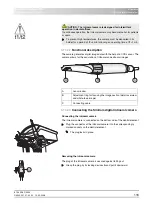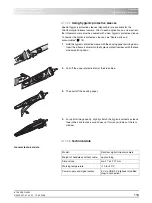
61 93 556 D3509
D3509
.
201.01.02
.
02
19.09.2008
104
Sirona Dental Systems GmbH
4 Operation
Operating Instructions TENEO
Assistant element
4.6.7
Mini L.E.D. curing light
The curing light is used to cure composite fillings with short-wave light.
4.6.7.1
Safety information
Mini L.E.D. laser light
Any condensation occurring in the handpiece of the Mini L.E.D. may cause
impairments (e.g. fogging of the L.E.D.). When moving the handpiece from a
cool environment to a warm room, always wait for it to reach room
temperature before putting it into operation.
Curing lights must not be used on persons who are suffering from or have in
the past been afflicted by photobiological reactions (including solar urticaria
and erythropoetic porphyria). Nor should they be used on persons currently
being treated with any medications which increase one’s sensitivity to light
(including methoxsalene and chlorotetracycline).
Any persons who have in the past suffered from retinal or eye lens disorders
or have undergone eye surgery, especially for gray cataracts, must consult
their medical eye specialist before using the light or undergoing treatment
with the Mini L.E.D. Caution is advisable even if the patient gives his or her
consent, since the light intensity can cause accidents. It is especially
advisable to always wear appropriate protective goggles. For the frequency
range of the light, refer to “Technical data” [
.
L.E.D.-STRAHLUNG
NICHT IN DEN STRAHL BLICKEN
ODER DIREKT MIT OPTISCHEN
INSTRUMENTEN BETRACHTEN
LASER KLASSE 2M
P < 1mW,
= 420nm - 480nm
IEC 60825-1 Ed. 1.2
l
L.E.D-Strahl
Austrittsöffnung
WARNING: The device contains an LED that falls under laser class
2M.
Viewing the LED beam exit aperture with certain optical instruments (e.g. a
magnifying lens within a distance of 100mm) can cause eye damage.
¾
Do not under any circumstances stare into the beam path when the glass
rod is removed.
¾
Never aim the laser beam at anyone's eyes, even if he or she is wearing
protective goggles.
¾
Never work without the glare shield.
¾
Never look into the light reflected by the tooth surface.
¾
Aim the light only at the treatment area in the oral cavity.

